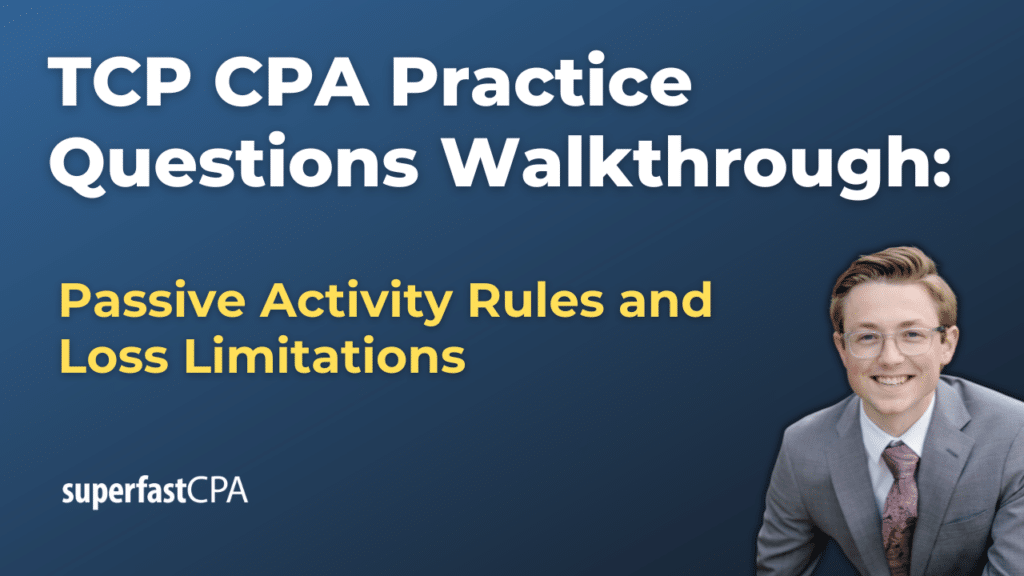In this video, we walk through 5 TCP practice questions teaching all about the passive activity rules and loss limitations. These questions are from TCP content area 1 on the AICPA CPA exam blueprints: Tax Compliance and Planning for Individuals and Personal Financial Planning.
The best way to use this video is to pause each time we get to a new question in the video, and then make your own attempt at the question before watching us go through it.
Also be sure to watch one of our free webinars on the 6 “key ingredients” to an extremely effective & efficient CPA study process here…
The Passive Activity Rules and Loss Limitations
What is Considered a Passive Activity?
A passive activity is any business or trade in which the taxpayer does not materially participate on a regular, continuous, and substantial basis. Material participation means being involved in the operations of the activity on a regular, continuous, and substantial basis. If you do not meet any of the IRS tests for material participation, the activity is considered passive.
Example: If you own a rental property and merely approve new tenants and authorize repairs but do not involve yourself in daily operations, it’s a passive activity.
What Counts as Passive Income?
Passive income includes earnings from activities in which there is no material participation. Common sources include:
- Rental activities, regardless of participation, unless the taxpayer is a real estate professional.
- Businesses in which the taxpayer does not play a significant role in day-to-day operations.
Income that does not count as passive includes:
- Wages, salaries, or professional fees.
- Dividends and interest (considered portfolio income).
- Income from active business participation.
Example of Passive Income: Income from a limited partnership where the taxpayer is not actively involved in the company’s operations.
Real Estate Professional Exception
Taxpayers who qualify as real estate professionals are exempt from the usual passive activity limits on losses from rental properties. To qualify, an individual must:
- Spend more than 50% of their working hours in real property businesses in which they materially participate.
- Spend at least 750 hours per year in these activities.
Example: A real estate agent who works 1,200 hours a year in real estate sales and spends an additional 500 hours managing her rental properties qualifies as a real estate professional, thus her rental losses are not limited by passive activity rules.
Passive Losses and the $25,000 Allowance
Generally, passive losses can only be offset against passive income. However, there is a special allowance for rental real estate losses:
- Up to $25,000 of net rental losses may be deducted against other types of income (e.g., wages), but only if you actively participate in the rental activity.
- Active participation requires involvement in significant management decisions but doesn’t require regular, continuous, substantial activity. Owning at least 10% of the rental property and making management decisions qualifies.
Example: John, who works full-time in an office, owns a rental property that generates a loss of $10,000. He makes decisions about rent amounts, tenant approval, and repairs. He can use the $10,000 loss to offset his salary income because he actively participates and meets the requirements for the $25,000 allowance.
Phase-Out of the $25,000 Allowance
The $25,000 allowance reduces by 50 cents for every dollar that the taxpayer’s modified adjusted gross income (MAGI) exceeds $100,000, phasing out completely at $150,000.
Example: If a taxpayer has a MAGI of $110,000, the $25,000 allowance is reduced by $5,000 (50% of the $10,000 excess), allowing them to deduct only $20,000 of their rental losses.
These rules encapsulate how passive activities are taxed and how losses can be used, providing important tax planning opportunities and obligations. Understanding these can help taxpayers maximize their tax benefits while remaining compliant with IRS regulations.












